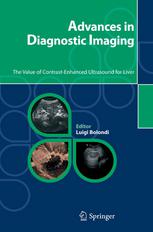

Most ebook files are in PDF format, so you can easily read them using various software such as Foxit Reader or directly on the Google Chrome browser.
Some ebook files are released by publishers in other formats such as .awz, .mobi, .epub, .fb2, etc. You may need to install specific software to read these formats on mobile/PC, such as Calibre.
Please read the tutorial at this link: https://ebookbell.com/faq
We offer FREE conversion to the popular formats you request; however, this may take some time. Therefore, right after payment, please email us, and we will try to provide the service as quickly as possible.
For some exceptional file formats or broken links (if any), please refrain from opening any disputes. Instead, email us first, and we will try to assist within a maximum of 6 hours.
EbookBell Team

5.0
28 reviewsIn recent years, the imaging-based diagnosis of mass liver lesions has become increasingly complex due to the number and morphological variability of lesions that modern imaging techniques are currently able to display. If the sensitivity in detection has greatly increased, characterisation has remained difficult and represents a critical challenge for the clinician.
The availability of blood-pool contrast agents for ultrasound (US), in particular second-generation US contrast agents based on perfluorocarbon- or sulfur-hexafluoride-filled microbubbles, and the development of contrast-specific software and technologies have opened up new perspectives both for the immediate characterisation of any mass lesion detected in the liver and for increasing the sensitivity of US in the detection of liver metastases.
Taking into account the great impact of this new technology on clinical practice, the European Federation of Societies for Ultrasound in Medicine and Biology (EFSUMB) organised, in January 2004, in Rotterdam, a consensus meeting of experts in order to develop guidelines for the use of US contrast agents in the diagnosis of liver diseases . These guidelines, as well as discussions of further advances in the clinical application of contrast-enhanced harmonic US are presented in this book by an internationally renowned group of experts. The book represents provides an important starting point for clinical implementation of this new diagnostic procedure.